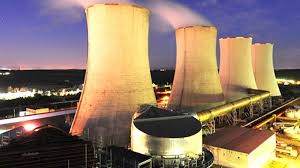Re-purpose small thermal stations to waste-to-energy
Zimbabwe has suffered load shedding perennially for almost two decades now due to aging equipment and lack of investment in the energy sector and this has prompted engineers to call for re-purposing of smaller thermal power plants to waste-to-energy plants.
Engineers are arguing that the country can come up with this strategy as they have already gathered information of such a model as it is being planned to be done in Pomona. Some have argued that we can destroy the existing ones and put solar farms.
However, there is a consensus that the cost of demolition and reconstruction might not be feasible, as there is also a need more space for solar to produce what is currently being produced by the power plants.
Engineer Promise Makumbi said solar was not the only alternative but other methods can help as they are both cheaper and more efficient.
“Solar will cost us more for less power, but if we do waste-to-power then we can use the same infrastructure and produce more energy while also keeping our cities clean as garbage collection will be of essence,” Makumbi said.
As of Wednesday ZPC was producing 352MW with 280MW coming from Kariba and 72MW coming from Hwange, with all the three smaller power stations not producing anything.
The country’s plan to refurbish two idle coal-fired power stations were thrown into disarray in early 2022 by China’s decision to ban investment in plants burning the dirtiest fossil fuel outside its borders.
Zimbabwe was depending on China to help get the Bulawayo Power Station and Munyati Power Station on to produce electricity to fill a chronic shortfall in the southern African country.
However, the Government has been saying it secured funding to enable small thermal power stations, that is, Bulawayo, Harare, and Munyati, to generate more electricity to ease the current energy crisis.
Addressing a press conference in December 2022, Energy and Power Development Minister, Soda Zhemu said; “Munyati power station has a capacity of 90MW, Bulawayo produces 100MW, and Harare around 200MW.
“They have been producing less and we are working on Bulawayo station to produce around 90 to 100MW, and funding has been secured for that.”
Zhemu also said the Government was considering moving Bulawayo thermal station to Hwange, to avoid future coal supply challenges. The Bulawayo and Munyati plants were built between 1946 and 1957.
Engineer Lennon Madzamba believes that the continued existence of the smaller power plants as complimentary stations is just an insult to the nation and repurposing is the way to go.
“We cannot say we have smaller power plants when combined they cannot produce at least 40 percent of their installed capacity. If we are a serious nation, we should repurpose these power plants like what the Netherlands did in the 80’s,” Madzamba said.
In the late 1980s, the Netherlands suffered from a lack of landfill capacity and insufficient thermal treatment capacity.
This urged a change in waste management policy with the following results, the amount of waste land filled decreased from 35 percent in 1985 to 2,1 percent in 2016, the rate of recovery (including waste-to-energy) rose from 50 percent to 93 percent and more and more waste is collected separately. Currently, 77 percent of our waste is recycled and the residual waste is mainly used for energy production.
According to Engineer Martin Kashiri, the combustion process is very similar to that of fossils, but with a little adjustment. He also argues that the use of these already existing structures will reduce cost and increase benefit.
“During the combustion process, sorted waste is lifted into a combustion chamber to be burned. The heat released during mass burning converts water to steam. The steam then produces electricity through a turbine generator.
“Early waste combustion systems were more simple, producing heat and carbon dioxide as well as other pollutants,” Kashiri added.
Zimbabwe has an installed capacity to produce 2 100MW, but used to generate an average 1 200MW to 1 300MW in 2022, but has been averaging 400MW in 2023. When possible, it meets the shortfall through imports.-ebusinessweekly











